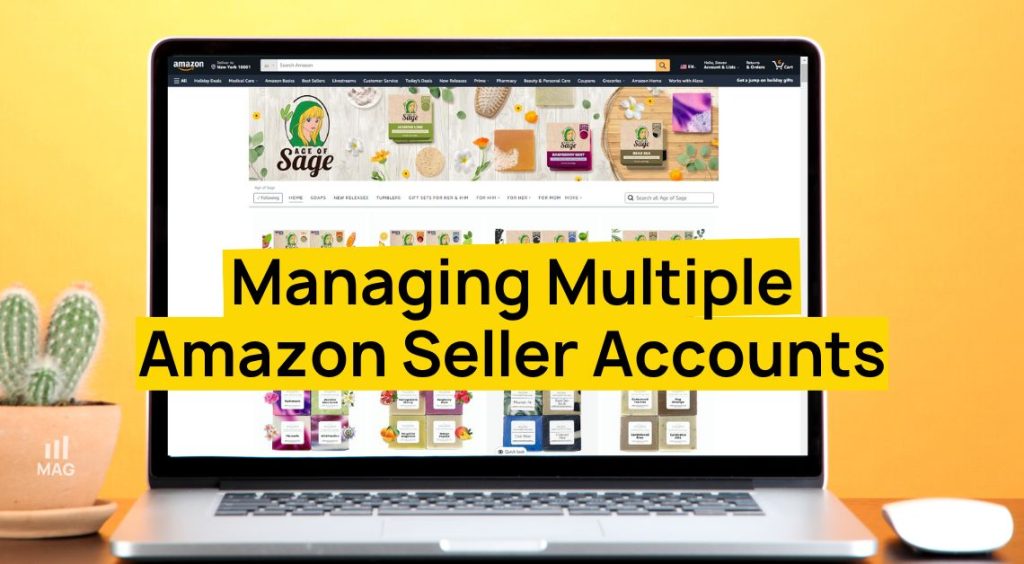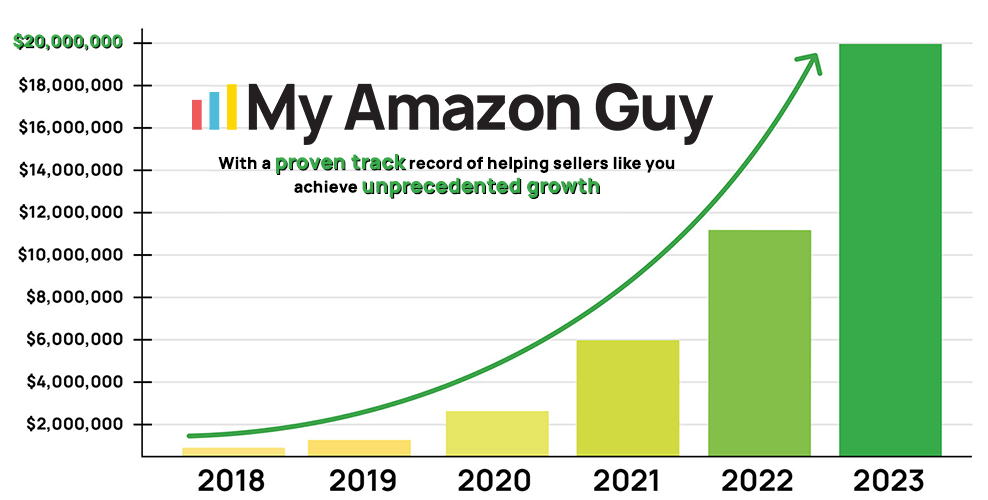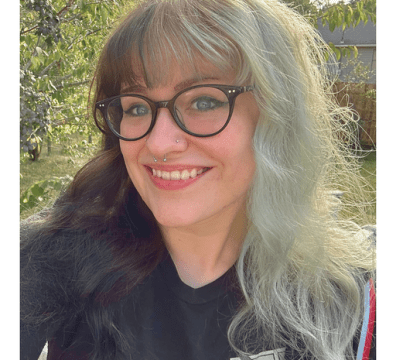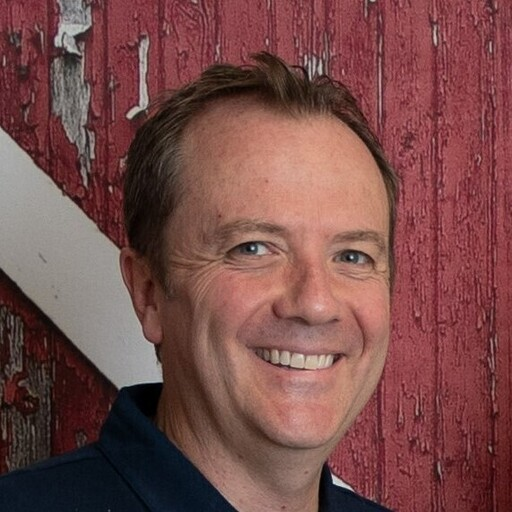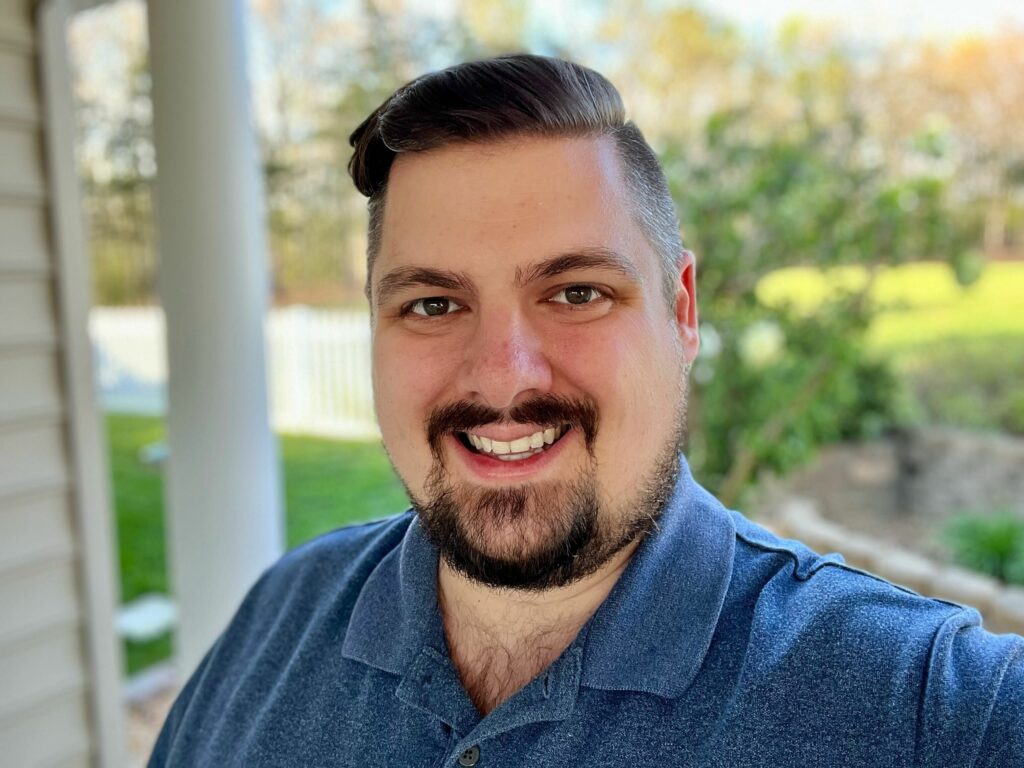Amazon is the biggest “mall” in the country. People trust Amazon, it is fast, everything is there, prices are better than the brick-and-mortar shops, the experience is so good, it’s addictive.
For the entrepreneurs. it’s the frontline of entrepreneurship, you can start your brand, ship your product directly to Amazon, scale to USA, Canada, Mexico, UK, EU.
Once you start your product on Amazon, however, you need to show up. You will need to protect your competitors from eating up real state on your product page. And that’s what PPC is for – aka “Pay per Click”, Amazon Ads, Paid Sales.
PPC will take your store from the back of the mall next to failed Department Store to the main entrance, where the best foot traffic is.
When a solo-entrepreneur starts PPC, all he knows is how to “press the gas”. And Amazon is very happy with that. If you want to spend money on ads and not be profitable, it’s totally ok, Amazon will be happy to take your money.
Amazon will be happy if you play PPC like a Casino.

When sales drops, the entrepreneurs usually think competition is stealing their sales. So they press harder on the gas, ACOS go up, TACOS eat profitability and they are only left it with “I had to do it for the branding”. That’s not a good strategy.
Once you get more experienced with Amazon PPC, you find out there is also a brake, not just an accelerator. Knowing when to press the break and push the gas has become a profession. Legions of PPC Experts teach, learn, make a living creating processes to professionally manage any PPC Account.
On the other side, there are software companies using Artificial Intelligence to manage Ads Campaigns. They are getting better and better, but, so far, they cannot do contextual analysis like an human can. They also are not good at routing the tests to the ones that actually make sense.
At My Amazon Guy, we do have a PPC Department. We help hundreds of accounts to grow their sales, grow their profits, scale their business, navigate seasonality, help the entrepreneur to make sense of what’s going on.
The strategy at MAG is exactly the same as the applications with Artificial Intelligence and Statistical Analysis use, however here we put a lot of emphasis on the contextual analysis, something the machine cannot do it, making our processes at MAG one of the best in the market.
In this guide, we will open the doors to our PPC Department, you will see first hand why hundreds of sellers chose MAG to manage their PPC.
FIRST TACOS, then ACOS, then CPC, finally CPO
In order to start talking about PPC, there are 3 main KPIs to start the conversation.
ACOS is the Advertisement cost of sales, expressed in percentage. It means how much you spend on ads in comparison to the sales you got with the ads (Paid Sales). It’s the first KPI you should check.
TACOS is the True Advertisement cost of sales and it’s totally different than Target ACOS, Target ACOS is just the ACOS that you want to get to. TACOS is almost the real deal, because it represents the cost of advertisement from the amount of total Sales (Organic Sales plus Paid Sales). It means what’s the percentage of your ads spend related to your gross income.
As you use PPC and you get sales, you end up improving your organic ranking and brining more organic sales, so TACOS is much more important than ACOS and it’s the most important KPI you should look at.
CPC means cost per click and it’s just an average of the cost of each click you pay on your ads from a search term, campaign, portfolio or for the entire account. It’s a very useful KPI that will be important for bid updates and other important metrics.
CPO means cost per order, and that is the last frontier of a well managed PPC account and it brings us to a PPC paradox.
If you super optimize your account, you will cover the real state so well with paid ads, that your organic sales will start to see a decline, TACOS can be only ok when this happens, so you will need to start measuring your True CPO to fix this issue.
Example:
Coming back to TACOS -TACOS is what matters the most. If you have a gross profit of 25% and you want to get, at least, 10% profit net, how much should your TACOS be? At the most, 15% of TACOS. But considering you also have storage fees and other fees on your business, it’s most likely that your TARGET TACOS should be over 10%, or else, you make less than 10% net profit.
And trust me, everybody wants 10% net profit, considering your product is indeed awesome, you have more than 100 reviews with at least 4.3 stars and your refund rate is below 3%.
Simple math, healthy business. You need to know your TACOS so you can work towards a good net profit margin.

Where do you see your TACOS then?
You don’t. At least from the Ads Console, you cannot see your TACOS.
First, you need to get your Ad Spend from a given period of time, let’s say 30 last days for example.
Then you need to go to your Business Report, get the sales from the same period.
Finally, you divide [Ad Spend] / [Total Sale] * 100 to find your TACOS.

A SCALABLE PRODUCT
Before jumping into PPC, you need to have a clear understanding on what a scalable product is. A scalable product should have all the items below:
- Have a unique value proposition that the market understands, in order words, a clear differentiation
- Have more than 100 reviews
- Have at least 4.3 stars
- Have a return rate below 5%
- Have a well-done listing with a conversion rate of at least 16%
- At least 22% of gross profit and the possibility of increasing this margin once you get to increase your orders
- Low seasonality
*Your differentiation cannot be only price. A price war is a commodity war that leads to no winner.
PRO TIP: If your product is indeed a scalable product, then you are ready to take full advantage of PPC. If your product failed to be scalable, just remember, PPC with a weak product can only get you so far.
If there is one aspect that you can work to make your product more scalable, it would be differentiation based on the benefit it brings.
LAUNCHING A PRODUCT
If you don’t have 100 reviews or even 40 reviews, you may still be in Launch Mode. Don’t expect to be profitable during this phase. It could happen, but it’s unlikely. Focus on getting more reviews.
Once you see momentum coming up, try to get to break even or close to it.
Let me repeat this part: Don’t expect profits if you are launching. A professional PPC management can only get you so far once you are launching.
BSR
Yet another important concept is the Best Seller Rank. The faster you sell your product, the best is your ranking and the more your product will show up organically boosting your SEO too.
Unit Sessions Percentage
This obscure name called “Unit Session Percentage’ is actually your Conversion Rate. And this metric is super important.
It is calculated by units ordered / # of sessions. And you can find these results on your business reports on Seller Central.
The average conversion rate on Amazon is around 12%. That means: that every 100 clicks on your product, leads to 12 sales.
We like to work with products with at least 16%. And that’s why it’s important to have a good listing. When a customer goes into your listing and has a question, doubt, or fear, he will not buy, so make sure your listings go through all buying objections and keep them focused on the benefits, not the characteristics.

PPC Flywheel
Even though there are many articles about the Amazon flywheel based on customer service, we will talk about a different flywheel here, the PPC one.
As you start your PPC strategy and drive traffic to your products and find the sweet spot for your thousands of different bids, you are pushing the paid sales. As you gain sales velocity, your BSR grows. You start to show up in more places, and your organic ranking on SEO also improves.
Now the wheel is spinning. As you keep running your PPC Strategy you start to get more speed on the flywheel. And that brings to the next topic.
Seasonality
The flywheel would keep accelerating in theory if you have a scalable product where stock never runs out and the seasonality is inexistent.
But seasonality is an issue that you must take into consideration when doing PPC. Knowing the seasonality is super important to drive the PPC train. When traffic and buying intention are high, you can accelerate harder and break softly. When traffic is down and buying intention is low, it’s imperative that you accelerate slowly and brake hard. There are many statistical models that you can use on your strategy to see what kind of terrain you will face ahead.

Brand Analytics
If you are brand registered, you’ll have access to Brand Analytics under your Brand menu on Seller Central. This incredible tool will help you so much to understand your PPC Strategy and build your listing for the demographic that you are serving.
Inside this tool, the first tab is Amazon Search Terms. You can have amazing information on the keywords related to your product and you can even research your competitors and see how they are doing.
Repeat Purchase Behavior is great if you work with a repetitive purchase product.
Market Basket Analysis can give you bundle ideas. Item Comparison and Alternate Purchase Behavior can show what are the similar products the visitors are seeing while seeing your product.
Finally, the Demographic will show you the demographics of your buyers.
This is a tool that is extremely important to planning your business strategy. The opportunities here are endless.
Ok, let’s go back to the PPC Strategy.
Organization
We recommend that you use Portfolios to separate products or groups of similar products.
One campaign can have many Ad Groups, but that can be confusing, so we try to keep just one Ad Group per campaign most of the time.
Ad Groups should not have hundreds of targets, otherwise, you will not able to test your targets properly with a moderate daily budget, try to keep your targets below 25 on each Ad Group.
Types of Ads
There are basically three categories of Ads you can use on Amazon.

Sponsored Products – Sponsored Brand – Sponsored Display
Sponsored Products
This is the oldest ad type. You can do the following types of campaigns:
- Auto Targeting
- Manual Targeting – Exact Match, Phrase Match, and Broad Match
- Product Targeting
- Category Targeting
We always start with Sponsored products because they will be the initial foundation of your PPC Strategy.
Sponsored Brands
If you are Brand Registered, you’ll have access to these Ads.
- Product Catalog runs with at least 3 products, but you can show more products once the user clicks on your logo. You can use Broad, Phrase, Exact, and Product Targeting. You should do one campaign for each match type. You can create a new landing page with 3 products at least or you can drive traffic to your store like the next item below.
- Store Spotlight runs traffic to your store and subpages. You can show up to 3 products but your Store page can have more than 3 products. You can use Broad, Phrase, Exact, and Product Targeting. You should do one campaign for each match type.
- Video shows a video and you can choose one product. You can use Broad, Phrase, Exact, and Product Targeting. You should do one campaign for each match type.
Sponsored Display
Product Targeting Categories can show your product in categories covering a vast amount of competitors. You can refine the categories to target weak products with the high price, low number of ratings, not prime eligible, and weak brands.
- Product Targeting Individual Products can show your product on specific products you choose.
- Audiences Views Remarketing lets you target people that viewed a similar product to yours in a lookback window of some days, like 30 days for example.
- Audiences Views Purchase Remarketing lets you target people that bought a similar product to yours in a lookback window of some days, like 30 days for example. This is great for products that have repetitive purchase
- Amazon Audiences lets you reach relevant audiences using our exclusive segments to drive awareness and consideration.
Another detail about Sponsored Display Ads:
You can optimize your bidding for reach, page visits, or conversions.
- Reach will optimize your bids for higher viewable impressions. It will focus on awareness by showing your ad to relevant audiences on and off Amazon. It will use Cost per 1,000 viewable impressions (VCPM) | Conversion attributed to viewable impressions and clicks
- Page visits will optimize your bids for higher detail page visits. It will try to bring product consideration by showing your ads to shoppers more likely to click on your ad.
- Conversions will optimize your bids for higher conversion rates. It will try to drive sales by showing your ad to shoppers more likely to purchase your product.
What types of ads should you use then? Eventually will try to use as many as possible, if they make sense, of course. But in order to use them, you need to understand how they work and what’s the strategy behind it.

THE BASICS OF YOUR GLOBAL STRATEGY
These Sponsored Product Campaigns are usually (not always) the starting point of your global strategy. As we wrote earlier, each portfolio should contain campaigns for just one product or, at the most, a group of very similar products.
Bids should start from the bottom, not from the top, and not from the middle. You should increase targets with low impressions and low clicks bit by bit every 5 to 7 days.
Discovery Campaigns are the campaigns that are supposed to find you profitable keywords if you do it right.
Discovery Campaigns are Auto Campaigns, Broad Match Campaigns, Phrase Campaigns, and Category Campaigns. You should not mix match types in one ad group. Every Ad Group should have just one match type.
Discovery Campaigns contain targets but note that these targets contain search terms inside.
That’s why they are called discovery campaigns because each target has a group of search terms that we will explore. Some search terms will perform well, others will not. So you’ll need processes in place to monitor all these search terms that are being used on the discovery campaigns.
Winner’s Campaigns are campaigns of type Exact Match. They are usually keywords that are extremely relevant to your product or keywords that were once winning search terms from the discovery Campaigns.
Exact Match campaigns do not have hidden search terms, they are an exact match so the target is the only search term you are actually bidding on.
Heros’ Campaigns – These are Exact Match Keywords that perform so well, that we need to give them their own campaigns with the daily budget just entirely for them. Hero’s are your best friends and they will also give you ideas to try new variations on the Discovery Campaigns.
Example:
Let’s say you have a discovery campaign for a product, it’s a Broad Match Campaign. Each target has actually a group of search terms and one of these search terms is making 5 sales at a low ACOS of 5%. Your processes should be able to identify this search term and move it to an Exact Campaign as an Exact Match Target. This search term has now become a keyword. And if its performance keeps being good, this keyword might become a Hero and we would move it to a Hero Campaign and it will be alone with the full campaign budget.
That’s it?
Unfortunately, no. There are hundreds of processes and comparisons to go over every possible scenario, compare it with historical data and perform a specific action.
There are search terms that get too many clicks and get no sales. There are search terms that make sales but at a High ACOS. There are search terms that have a very low impression and there are search terms that spend too many dollars. When you start comparing the search term performance in different periods of time, it gets harder. If you add data from competitors, categories, e-commerce statistics, macroeconomy trends, we get analysis no other seller is able to do.
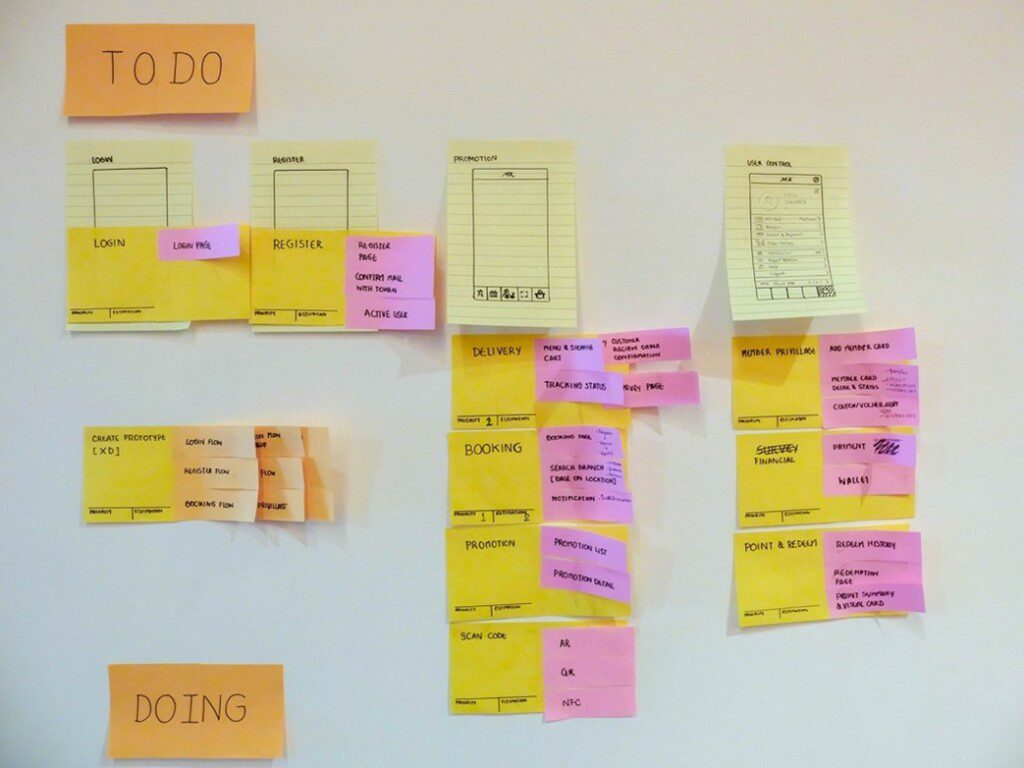
INTRODUCTION TO SOPs
To manage all these possible scenarios with multiple Target ACOS’, we will need to discover every agency’s secret. The secret is to start building the SOPs (Standard Operating Procedures) to manage your PPC.
In our case, at MAG, we build SOPs to manage hundreds of accounts, boost targets, press the brakes, double-check tasks, compare data between competitors, categories, e-commerce data, and we keep evolving. They should follow the statistics structure used by artificial intelligence, but we do add the emphasis on our trained Ads Specialists and Data Engineers to route the tests and do contextual analysis.
You have two options now. You can start building your SOPs from scratch and have the methodology and discipline to follow it and evolve it. Or you can hire an agency that already has one. The better the agency, the better will be their PPC engines and the SOPs that make it.
Ok, now that you know a little bit of the basics, let’s see other operations.
PRODUCT TARGETING CAMPAIGNS
Product Targeting has 2 strategies: attack and defense. If we target competitors, we are attacking, but if we target our own products, we are basically advertising our products to our products, and that’s a defense strategy, we want to take up real state that a competitor could use.
Defense Campaigns usually have higher Target ACOS because we want to make sure our own products are strong enough to keep the competition away.
Attack campaigns are divided into 2: Attacking the strongest is done with much care. And preying on the weak. Weak products mean products that are more expensive, have fewer reviews and fewer stars, bad listings. The campaigns that prey on the weak campaigns are more aggressive compared to campaigns that target strong competitors.
GOLD PANNING
Gold panning act like a broad match campaign type. However, your targets here are extremely broad and you start with super low bids. They work great during Prime Day, Black Friday, Cyber-Monday, and the Holiday Season. Since you are using super broad targets, you should start with super low bids and increase them very slowly.
RETARGETING
With Sponsored Display Ads, you will be able to retarget possible customers with Views Remarketing. By doing so, people that visited your listing but did not purchase can be retargeted with ads from your product to incentivize the purchase.
If you are selling a repetitive purchase product, you can also use Purchase Remarketing so customers will remember to re-order your product.
CATEGORY TARGETING
On different types of ads, Amazon will let you target Categories. This is a super broad match that can cost you a fortune. Be careful, start from the bottom, do small increments, and be ready to stop them if they don’t perform well.

DATES COMPARISON
Another very important aspect of PPC is to do a date comparison. Date comparison will not only help you to predict the future, but it will also help you to see a moving picture instead of a snapshot of averages in a given time.
When we say predict the future, we take an audacious step here. We are simply finding the most likely scenario the data should follow in the future given the past data, competitor’s data, categories data, and e-commerce data trends. It’s like trying to find the path of a hurricane, and we just try to make decisions based on the ever-changing most likely scenario.
SUPER OPTIMIZATION
There are two important aspects of super optimization that you should understand when professionally managing PPC accounts.
If you lack data, you will make poor decisions. So, it’s important to collect data, have a clever way to collect data without spending too much, and count on patient clients that trust the process.
Another aspect very similar is constant changes based on recent events. You should be able to have SOPs that show the bigger picture.
Finally, once a PPC account becomes really well structured and tested, you can find yourself in another super optimization trap. You can be so good at taking real state with paid ads, that your organic sales stop growing and it can even fall. TACOS can still be under control at this stage, but True CPO will tell if you are super optimized or not.

SUAD
SUAD is the Holy Grail that all the PPC Department here at MAG wants to see. It means Sales UP ACOS DOWN. It means we are growing sales for our clients and optimizing our spending to reduce ACOS.
A MONEY-MAKING MACHINE
Behind all a professionally managed PPC account, there is beautiful math, and super intelligent processes that evolve, get better, learn, and project a future bid update for each target. It’s a money machine that gets better and better every day and it works well as long as we have a *scalable product.
On top of that machine, we have Ads Specialists that have worked with hundreds of accounts and manage dozens of millions of dollars in sales per year. They check the results, go over possible points of doubt, analyze the product and the economy as a human being and pull the trigger on the next bid update, actually thousands of bid updates. We are able to update thousands of targets and test hundreds of campaigns because the processes were developed, tested, and validated to go work with large operations and we do it via the API, not from the Ads Console by clicking on each campaign.
The engine for this PPC wonder loops around and repeats every week. The more data it has, the smarter it gets.
Once you get it, you have no option but to fall in love with it.
Fernando Azevedo is an Advertising Manager at My Amazon Guy.


